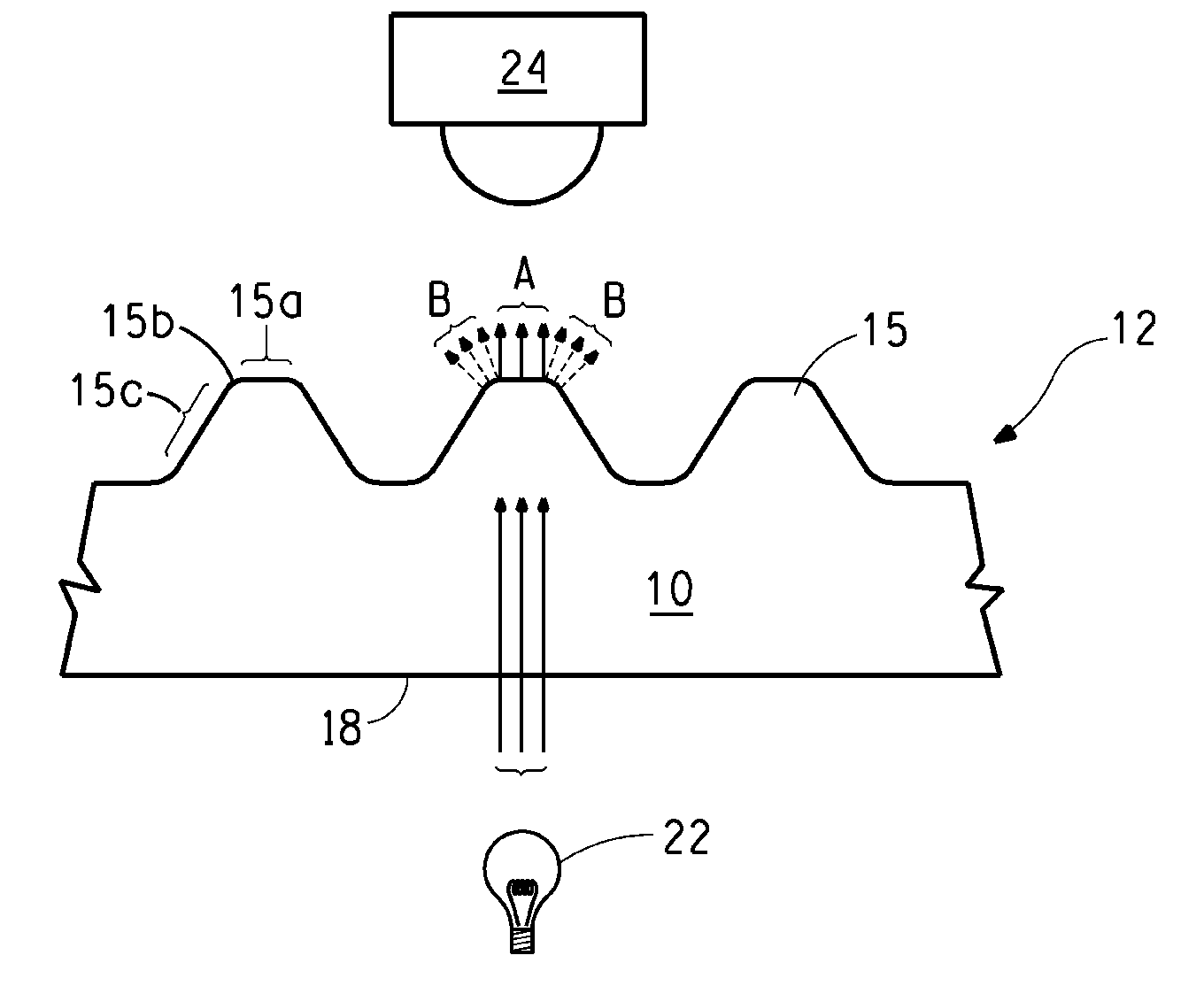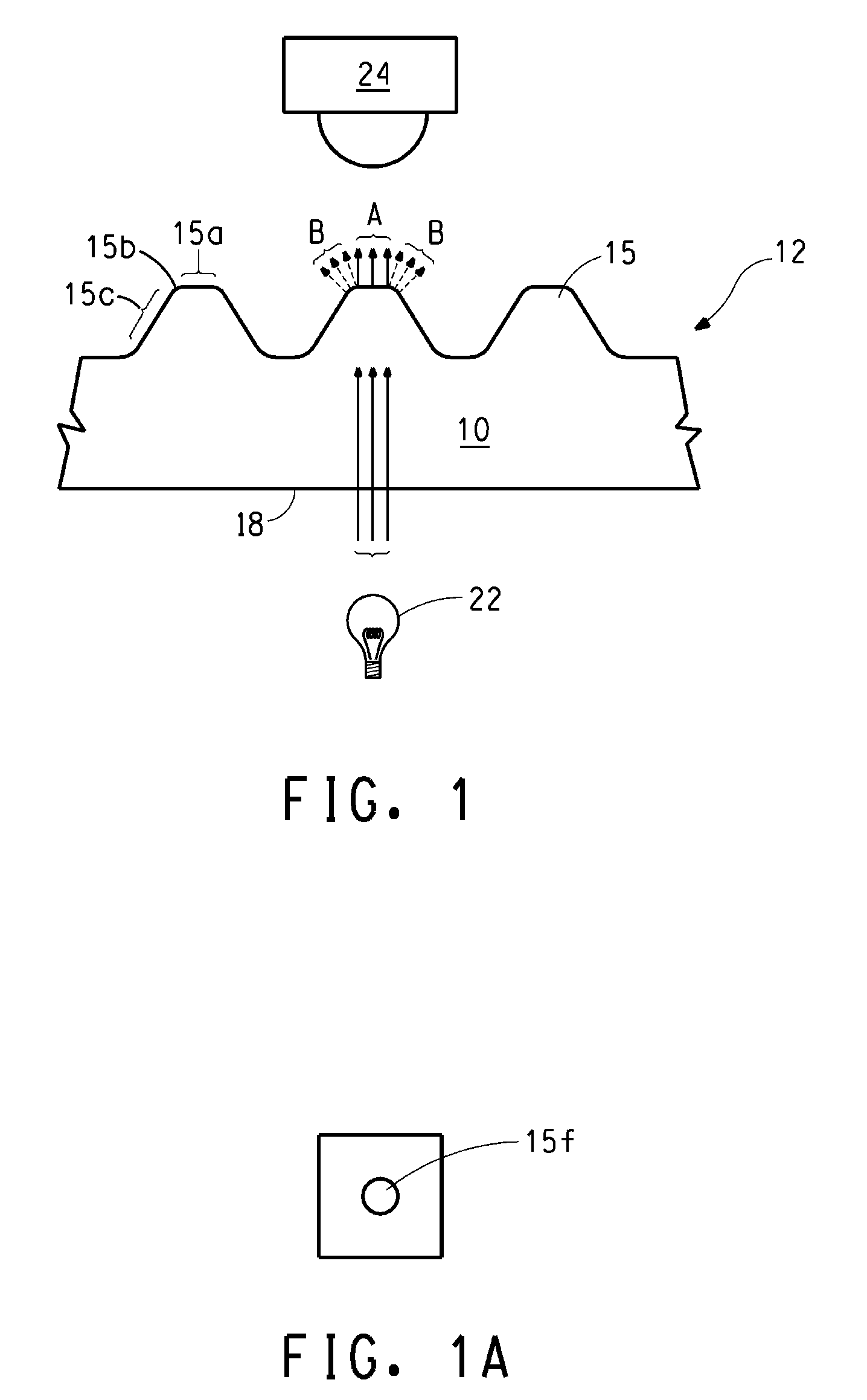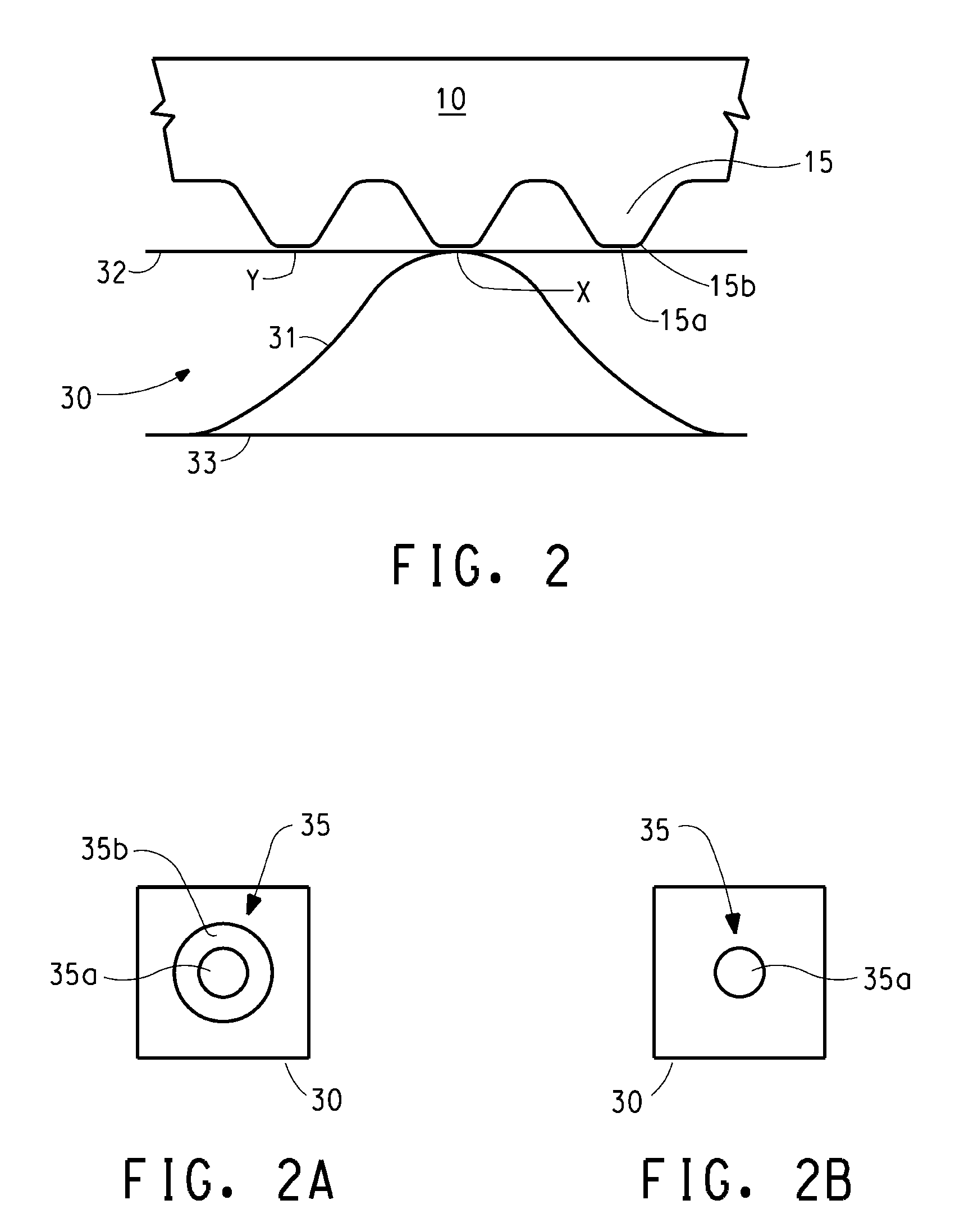Method for printing a pattern on a substrate
a technology of pattern printing and substrate, applied in the direction of photosensitive materials, instruments, photomechanical equipment, etc., can solve the problems of multi-color image mis-registration during printing, lack of intimate contact between phototool and plate, image artifacts,
- Summary
- Abstract
- Description
- Claims
- Application Information
AI Technical Summary
Problems solved by technology
Method used
Image
Examples
example 1
[0105]All plates tested were CYREL® photopolymerizable printing elements having total thickness of 125 mils (3.175 mm) (which includes the thickness of the photopolymerizable layer and the support) that are suitable for use as a flexographic printing plate. The photopolymerizable printing element included a layer of a photopolymerizable composition comprising elastomeric binder, at least one monomer, and photoinitiator between a support of Mylar® (5 mils) and a coversheet (7 mils). For analog plates, the coversheet included a release layer of polyamide, which was adjacent the photopolymerizable layer. For digital plates, the coversheet included an infrared-sensitive, actinic radiation opaque layer composed of 33% carbon black and 67% polyamide (by weight), which was adjacent the photopolymerizable layer.
[0106]Each element was backflash exposed to UV light (365 nm) for 85 seconds (17.6 mjoules / cm2 / sec) on a CYREL® exposure unit to form a floor. After imagewise exposure, each element ...
PUM
| Property | Measurement | Unit |
|---|---|---|
| diameter | aaaaa | aaaaa |
| diameter | aaaaa | aaaaa |
| temperatures | aaaaa | aaaaa |
Abstract
Description
Claims
Application Information
 Login to View More
Login to View More - R&D
- Intellectual Property
- Life Sciences
- Materials
- Tech Scout
- Unparalleled Data Quality
- Higher Quality Content
- 60% Fewer Hallucinations
Browse by: Latest US Patents, China's latest patents, Technical Efficacy Thesaurus, Application Domain, Technology Topic, Popular Technical Reports.
© 2025 PatSnap. All rights reserved.Legal|Privacy policy|Modern Slavery Act Transparency Statement|Sitemap|About US| Contact US: help@patsnap.com



